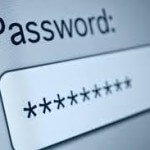 Imagine one day you log into your Facebook account and you see a bunch of posts and messages from “you” that you definitely did not write. Then you notice that your email account is filled with people telling you that you’ve been hacked. You log into your online banking and notice that your money is gone. What happened? You got hacked!
Imagine one day you log into your Facebook account and you see a bunch of posts and messages from “you” that you definitely did not write. Then you notice that your email account is filled with people telling you that you’ve been hacked. You log into your online banking and notice that your money is gone. What happened? You got hacked!
If you are like 99% of us, you have the same password for just about everything. You’ve tried to use “stronger” passwords, but you always forget them and end up wasting all this time resetting your password so you just go back to the tried, tested and true.
I’ve got bad news for you if that is you. News about a security vulnerability called Heartbleed in many websites such as Yahoo, Google, Facebook, and Dropbox were all affected. This means that if you have an account with any of those sites and you use that same password across other sites then someone could have your password, especially since you likely have the same username or email address on other sites as well.
*As with all of my instructions. If you can understand these instructions, then just do it yourself. However, if you need help, I can do this for you.*
What can you do?
I strongly recommend you start using a password manager. You can do your research and find the best one for you. During my research, I’ve found that the best one so far I can find is LastPass. Last pass is a secure way to keep track of all your passwords automatically. Best part is that you only have to remember one Master Password and the application will automatically fill in all the passwords as you visit sites on the internet.
That way, when something goes wrong you can easily see all the sites that you use and change passwords accordingly.
I very strongly recommend you do this now!


